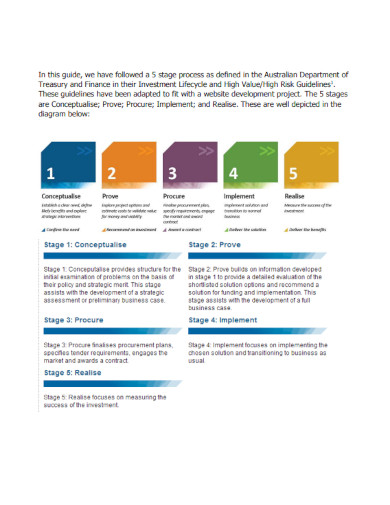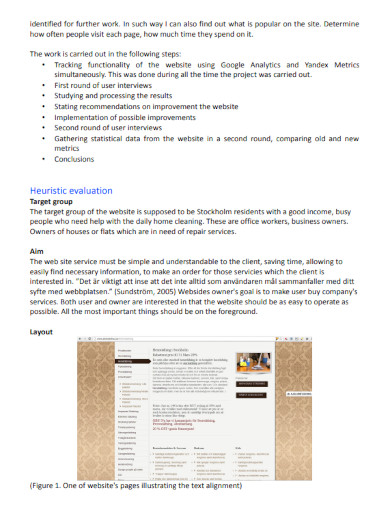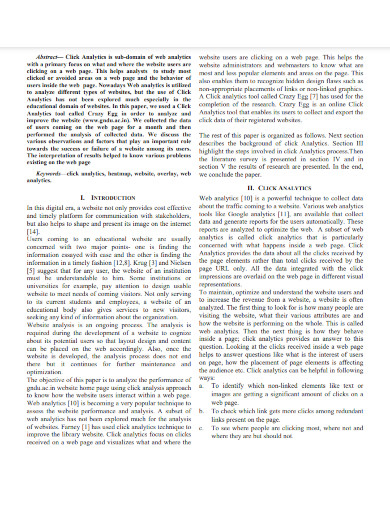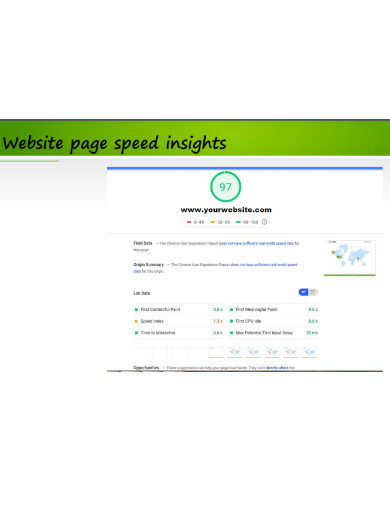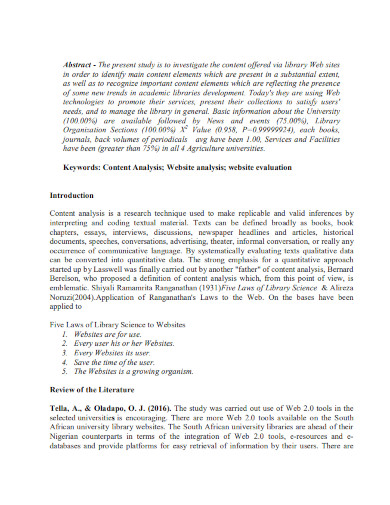Developing your website for quick surfing and searching not only helps to attract visitors, but it also motivates them to explore and return for more. User-friendly navigation, fast loading speeds, and working links make your website look more professional and boost the chances of consumer satisfaction. Analyzing your website will assist you figure out which of your optimization aspects are working and which ones could use some tweaking. Analyzing your competitors’ websites may also help you discover new content and keywords to target, discover new ways to improve the internet experience, and modify ideas to make your site stand out and generate more results.
6+ Website Analysis Samples
The process of testing and assessing a website’s overall performance of SEO, speed, competition, and traffic is known as website analysis. Any webpage can gain from website analysis if the data are used to enhance it—for instance, by minimizing page size to promote better speed or optimizing a high-traffic landing page for more results. The data you collect and the findings you obtain from a website analysis might help you optimize your pages and tactics to attract more new users and convert them into regular visitors.
1. Website Analysis Guidelines
2. Website analysis with Google Analytics
3. Analysis of Website Click Analytics
4. Website Analysis Report
5. Website analysis and Enhancement
6. Website Analysis Agricultural Sciences
Performing Website Analysis
We can all agree that having a site that performs highly on Google, is quick, and has no major usability difficulties is critical. We may certainly agree that knowing your competitive environment and maximizing the traffic to your website are equally vital for your business. Standard website analysis enables you do all of the above, but it won’t provide you a distinct significant advantage since your competitors are doing the same thing. They can all utilize the same SEO, performance, and traffic tools that you do.
Set your goal/intention
While we frequently encourage executing website assessments on a regular basis, this does not mean you should do so just for the sake of it. Every online analysis should, in fact, have a function. For example, perhaps you’re noticing higher bounce rates than usual across the site and want to figure out why. You might have released a new landing page that isn’t converting as well as you hoped, or you might have noticed a decline in SEO website traffic across multiple critical web sites. Whatever the reason, it’s critical to understand why you’re conducting a website analysis—in part because the lens within which you conduct your study will be determined by that underlying objective.
Map out your ideal website journey
Have a benchmark or ideal condition to evaluate your results to, no matter what area of your website you’re looking at. As a result, the following step is to sketch out the ideal website path you want consumers to take, from beginning to end. Every page in between that you want customers to visit, every micro-conversion that pushes them further down your sales funnel, and it assigns a value to those conversions are included.
Test to see what’s happening
This is the one stage that the majority of website analysis content discusses. It’s also the step where the procedure differs significantly depending on the type of website research you’re performing—whether it’s a competitive analysis, SEO analysis, UX analysis, or something else entirely. Heatmaps, session recordings, and other tools that enable you observe how real people act across your site can be used to examine the user experience of your web. Information on click activity, scrolling, and other factors provide context and qualitative reinforcement to the numerical data you would see in Google Analytics and other web analytics and analysis tools.
Compare the reality to your ideal and brainstorm causes and solutions
The final stage is to figure out why there are differences between these two (assuming there are any) and how to resolve them such that the actual situation resembles your ideal. After you’ve brainstormed potential causes and remedies, it’s time to put those changes into action and keep an eye on your website to see how they effect SEO, UX, page speed, and other factors. This is where frequent website analysis comes in handy, as it allows you to maintain track of progress, spot any new issues, and enhance your website.
FAQs
What are some of the website analysis tools you need?
- Website UX analysis software
- SEO tools for on-page and technical SEO analysis
- Competitor website analysis
What are behavior analytics tools?
Hotjar heatmaps and session records, for example, are behavior analytics tools that assist you learn how visitors behave on and engage with your website. Session recordings demonstrate you how users navigate among pages and help you reveal potential bugs, issues, or pain points they experience throughout their journey; heatmaps aggregate behavior on a page, showcasing the buttons, CTAs, and other clickable elements that your visitors are engaging with, scrolling past, and ignoring.
Various website analytics solutions have different features that allow you to track a number of market analysis and data collection factors. Putting these tools to the test might help you figure out which ones are appropriate for your analysis needs and business strategy. Many of these programs have both paid and free or trial versions, allowing you to see which ones are best for you.
Related Posts
FREE 10+ Fishbone Root Cause Analysis Samples in PDF
FREE 11+ Cost Volume Profit Analysis Samples & Templates in PDF | MS Word
FREE 6+ Corporate Portfolio Analysis Samples in PDF
FREE 10+ Fault Tree Analysis Samples in PDF
FREE 10+ Comp Analysis Samples in PDF
FREE 10+ Fishbone Analysis Samples in PDF
FREE 10+ Individual Swot Analysis Samples in PDF
FREE 10+ 5 Year Analysis Samples in PDF
FREE 10+ Benefit Costs Analysis Samples in PDF
FREE 10+ Job Hazard Analysis Samples in PDF
FREE 10+ Primary Source Analysis Samples in PDF
FREE 10+ Critical Path Analysis Samples in PDF
FREE 10+ Competition Analysis Samples in PDF
FREE 10+ Activity Hazard Analysis Samples in PDF
FREE 10+ Risk Benefit Analysis Samples in PDF

